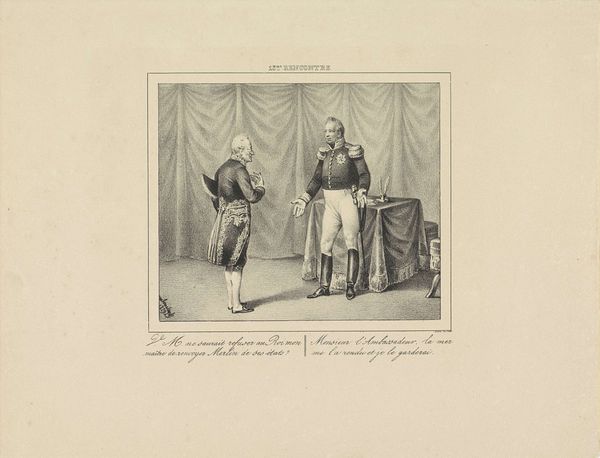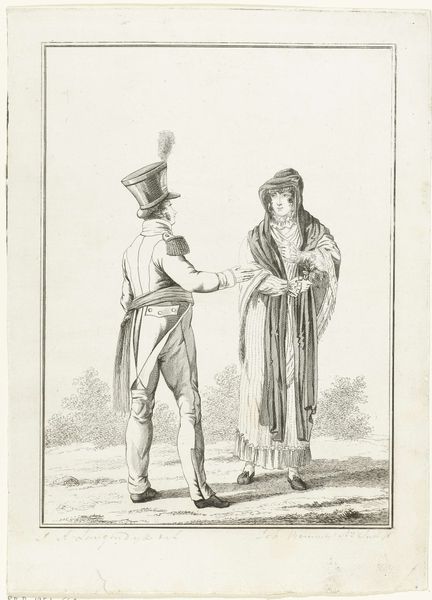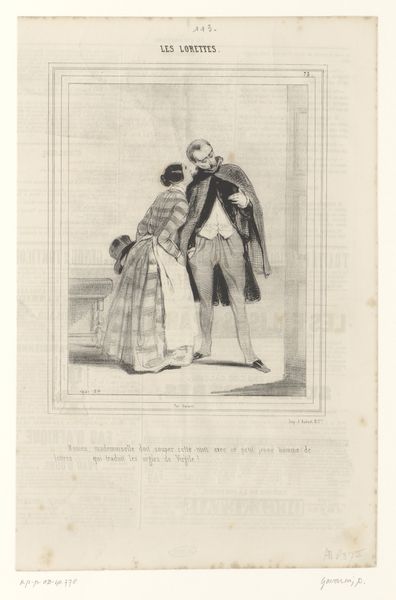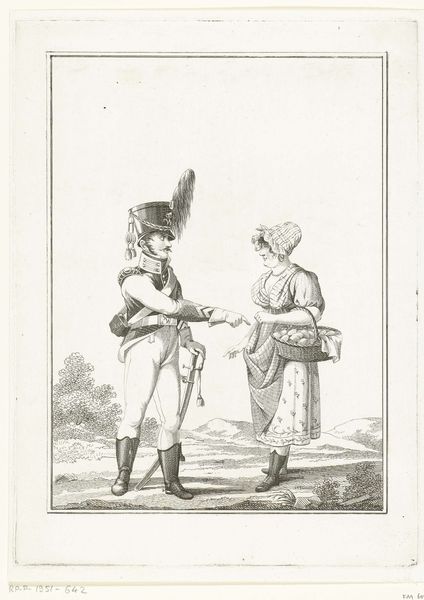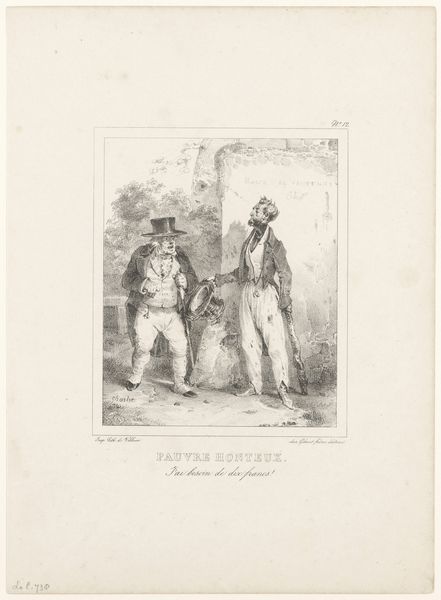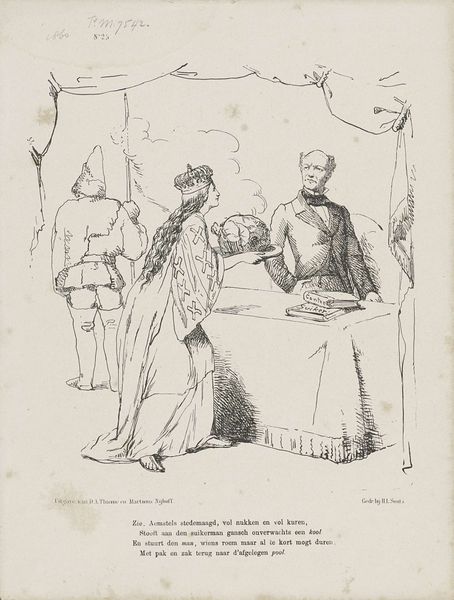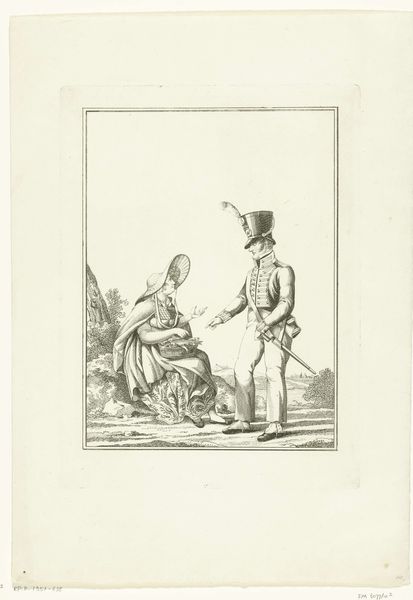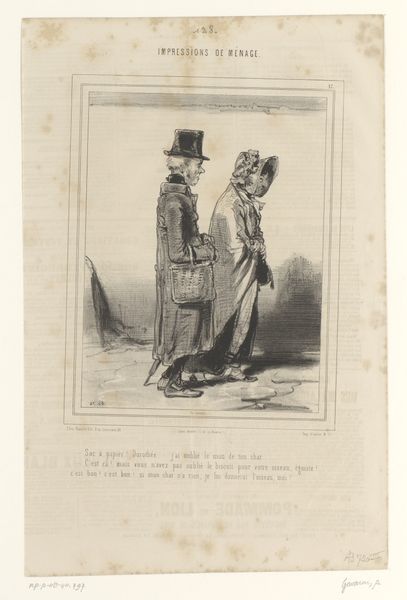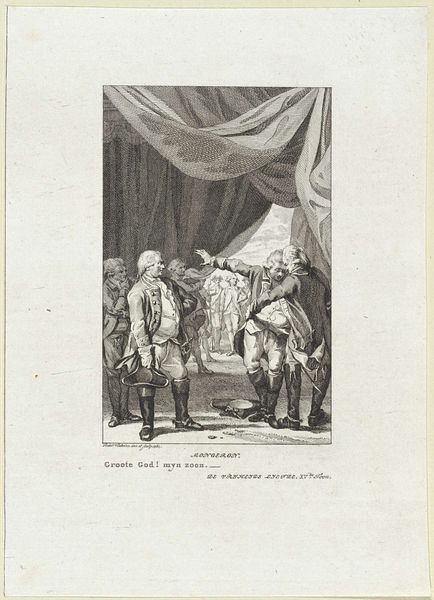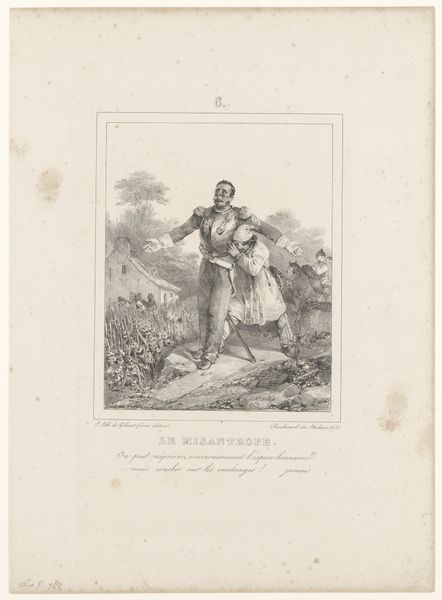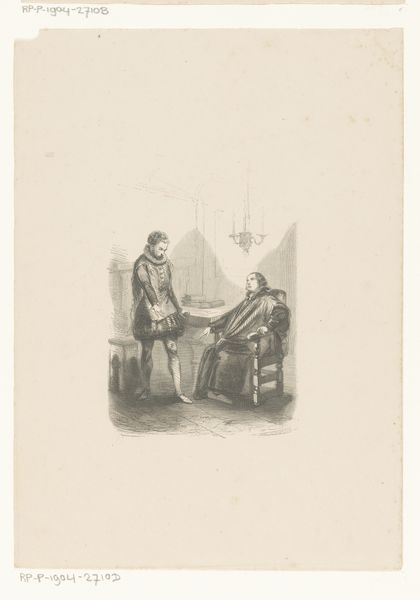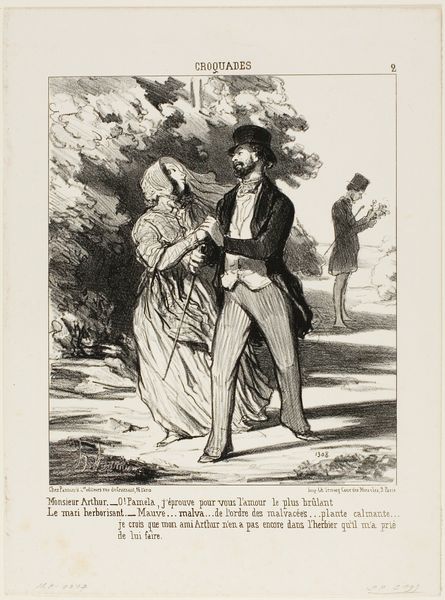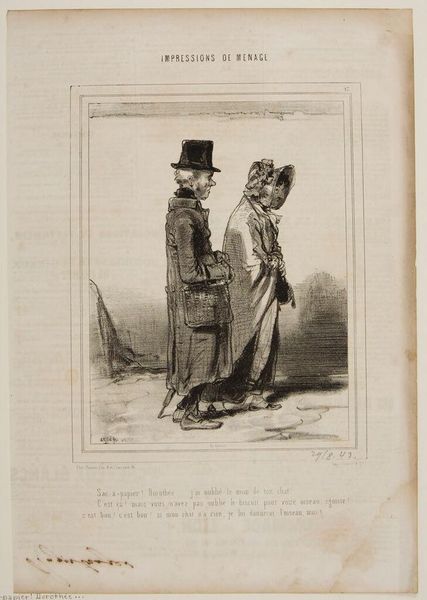
Hussein (dey van Algiers) feliciteert prins Frederik met zijn wreedheden, 1830 1830 - 1831
0:00
0:00
print, ink, pen, engraving
#
portrait
#
narrative-art
# print
#
pen illustration
#
caricature
#
old engraving style
#
figuration
#
ink
#
soldier
#
romanticism
#
pen-ink sketch
#
orientalism
#
pen
#
history-painting
#
engraving
Dimensions: height 355 mm, width 268 mm
Copyright: Rijks Museum: Open Domain
Editor: We're looking at "Hussein (dey van Algiers) feliciteert prins Frederik met zijn wreedheden, 1830," made between 1830 and 1831 by an anonymous artist. It's an engraving in pen and ink, and it definitely strikes me as a caricature. What sense do you make of it? Curator: It's fascinating to view this print through the lens of 19th-century power dynamics. We see Hussein Dey, the Ottoman ruler of Algiers, seemingly congratulating Prince Frederik of the Netherlands, presumably on the Dutch colonial exploits. However, the inscription hints at a deeper irony. How does the image play into the public perception of colonial violence and justification during that era? Editor: So, you're saying it's less a genuine congratulation and more a commentary on the perceived cruelty of colonial rule? Curator: Precisely! This was produced during a time when Orientalism shaped Western views of the "East." The exaggerated features and the scene's composition feed into the power imbalances between the colonizer and the colonized. Consider how prints like these were circulated, influencing public sentiment and justifying military actions. Who was the intended audience, and what narratives about Dutch colonial power were being reinforced or challenged? Editor: It’s interesting to think about how this seemingly simple print participates in a much larger socio-political conversation. It's much more than just a depiction of two figures meeting. Curator: Indeed. By examining the historical context, we reveal the politics embedded within seemingly innocuous images. It also prompts us to ask crucial questions about the role of art in shaping historical narratives and our understanding of the past. Editor: That’s given me a lot to think about regarding the relationship between art, politics, and history. I'll definitely view such pieces with a more critical eye from now on!
Comments
No comments
Be the first to comment and join the conversation on the ultimate creative platform.
